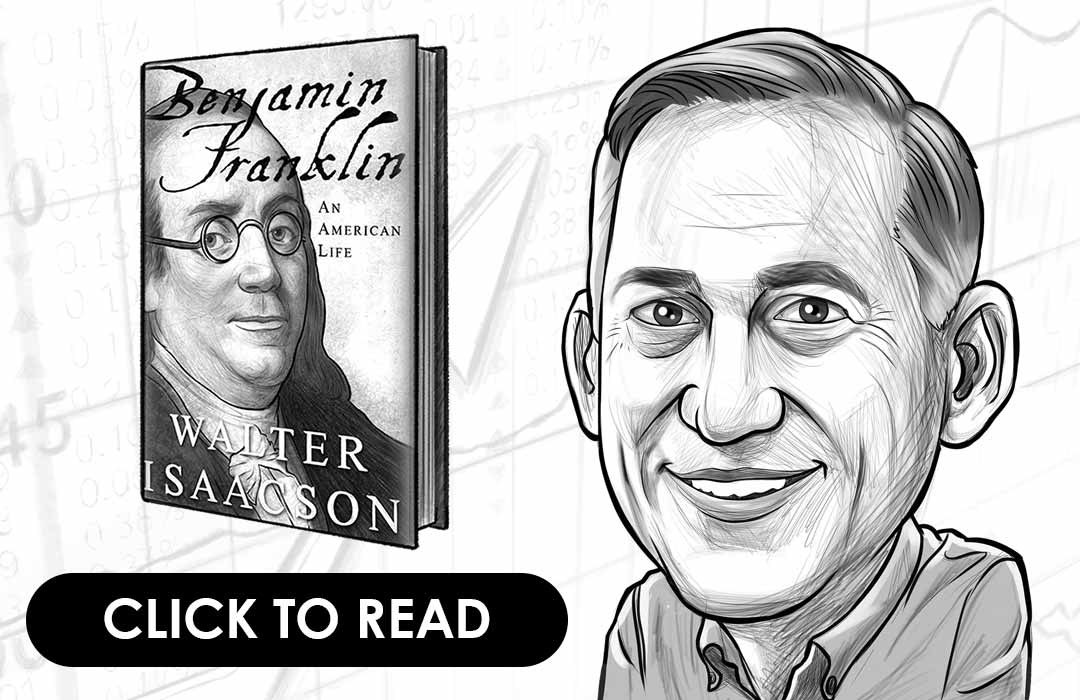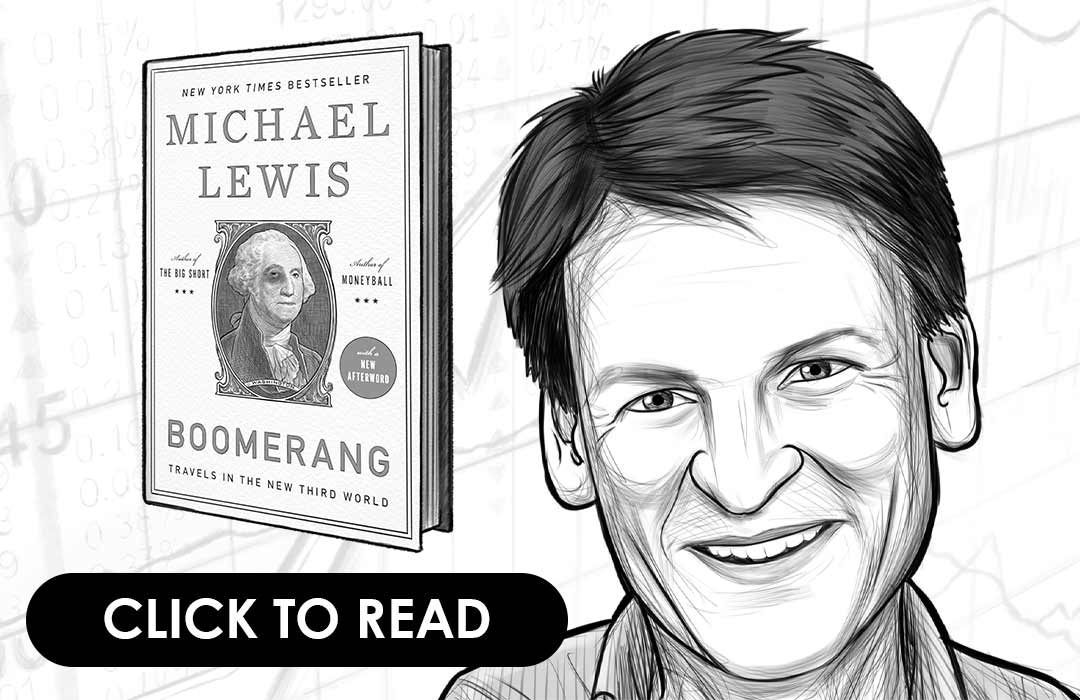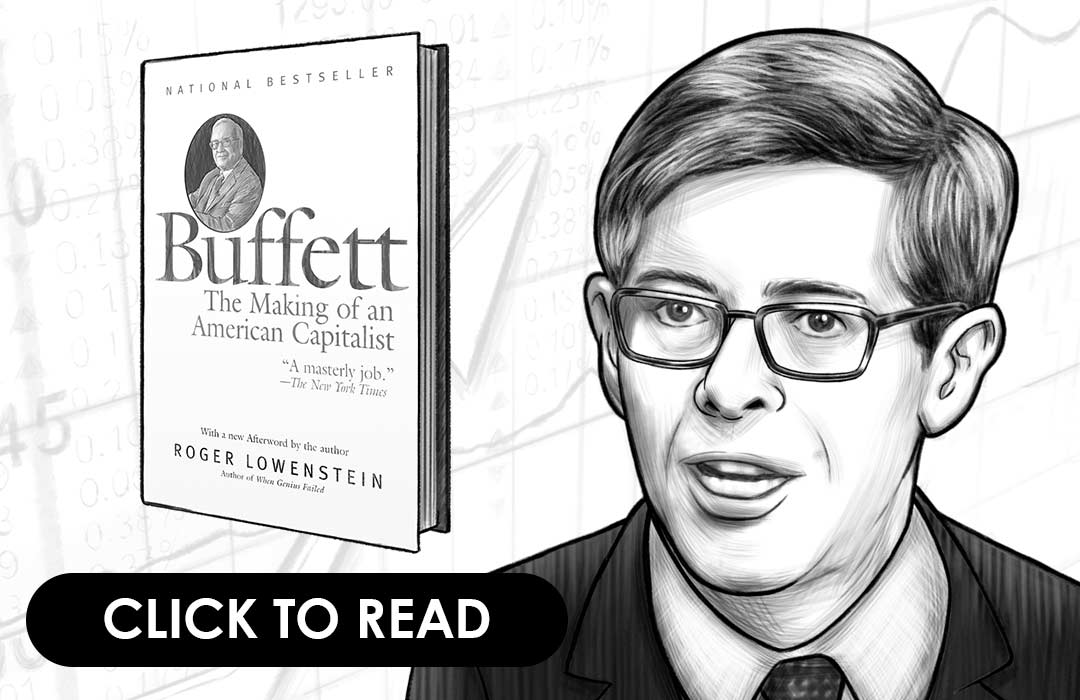An Executive Summary of The Little Book That *Still* Beats The Market
By Joel Greenblatt
INTRODUCTION
Have you ever wondered what it takes to beat the market in investing?
Would you believe it if you were told that there really is a short and digestible book that breaks down exactly how to do this?
The genius investor, Joel Greenblatt, who wrote “The Little Book That Beats The Market”, also created a simple magic formula that’s been proven to outperform the market across many time periods.
Greenblatt has spent over 30 years professionally managing money and beating the market averages, while also spending over a decade teaching Ivy league business classes. So the guy has no shortage of credibility, and he’s filled with remarkable wisdom and insights.
The book is timeless investing classic provides sage advice on the basics of value investing and Joel Greenblatt’s signature Magic Formula style of investing.
What’s important to know first is that the stock market should really be thought of as a marketplace of stocks. It’s a place filled with amazing opportunities, and there are countless people offering you shares in companies for you to sift through.
These shares represent ownership in real businesses, which means you have a legal claim on the company’s profits. Not all businesses are created equal though, so the value in ownership shares amongst stocks can vary widely.
Like in any marketplace, you can overpay, or you can find great bargains. If you find even just one great bargain, you can make a ton of money.
The hardest part, though, is finding the conviction and commitment to getting started and staying with it.
It’s so much easier to spend money on immediate pleasures before us now than stow it away in the stock market, and it’s even harder to survive the market’s fluctuations as we watch our hard-earned savings drop in value.
Understand the financial markets
in just a few minutes.
Get the daily email that makes understanding the financial markets
easy and enjoyable, for free.
WHAT TO KNOW?
In vetting opportunities, what’s important is to compare your expected returns against the risk-free rates, which, for all intents and purposes can be thought of as the interest rate on 10-year U.S. government bonds. The United States has the largest economy in the world, and all of its debts are denominated in its own currency which it can print more of should it need to do so.
This means that investors see the yields on its debt as the benchmark against which to judge all other financial assets that certainly have more risk in terms of possible default.
At a minimum, you ought to be picking investments that can reasonably offer a return greater than the risk-free rate that is currently around two-to-three percent annually.
Otherwise, it’s foolish not to just invest in Treasury bonds. In the years since the book was originally written, interest rates have come down dramatically, but the logic is still the same.
The point is that we want to be strategic about our investments. Don’t take the extra risk just for the sake of doing so and optimize your risks taken with respect to the possible upside in returns.
In this spirit, Greenblatt tells us that choosing individual stocks without any idea of knowing what to look for is like running through a dynamite factory with a burning match. Even if you survive, it’s still a dumb thing to do.
EXPECTED RETURNS
Let’s discuss then a great initial step to take here, which is to calculate your expected return on investment, and Greenblatt suggests considering the earnings ratio. This is the inverse of the famous price-to-earnings ratio.
For example, if you purchase a share in a company with ten dollars of earnings per share for one hundred dollars, then the price-to-earnings ratio is ten, which is just one hundred divided by ten. Your earnings ratio then is the earnings per share divided by the price you paid, so this would be ten divided by one hundred, which is ten percent.
For this company, you could seemingly expect to earn around a ten percent return. This, however, doesn’t tell you anything about how the company’s earnings will perform over the next year or your confidence in estimating this, nor will it provide insights into how much the company will earn going forward indefinitely.
To answer this question, you’ll be required to dig beneath the surface and earn a deeper understanding of the business.
For companies with more stable and consistent operations, we can expect their earnings each year to fit into a tighter potential range, whereas more erratic companies may have a huge range of potential earnings. We can use this range as the top and bottom of our expected returns, and intuitively, it should be clear that companies with more stable earnings tend to be far less risky.
VALUING COMPANIES
Stock prices for a given company often vary tremendously over the course of even just one year, yet are we really supposed to believe that the company’s underlying ability to produce profits going forward varies in this way? The answer in most cases is no, yet it’s not uncommon to see a range of 50% or more from top to bottom prices.
If such volatility is illogical with respect to the soundness of the actual business’s operations, why does it occur, asks Greenblatt.
He often poses this question to his student, and while they come up with dozens of different smart answers, he says that in reality, who knows and who cares?
We don’t need to know precisely why the market is illogical at times to accept that in this case,it is, and invest accordingly. He says quote, “The truth is that I don’t really have to know why people are willing to buy and sell shares of most companies at wildly different prices over very short periods of time. I just have to know that they do!”
Perhaps people make high estimates for future earnings, or they simply believe that others will bid up the price of a popular stock such that they can buy now and sell later at a profit.
These attitudes and estimates ultimately drive the stock price up and down.
Greenblatt implores us to focus on what we can actually know when valuing shares of stock. First is, as described earlier, the earnings yield, and second, is the company’s return on capital.
VALUATION FORMULA
Return on capital measures the percentage return by dividing the number of profits produced by a company by the amount of money that was invested to produce those profits.
This helps ensure that you’re not just buying a cheap stock, that is one with a high earnings yield or low P/E ratio, but also good quality businesses that’re likely to continue operating profitably.
Higher quality businesses will be able to generate greater profits with less initial investment, while poor quality businesses will require a greater outlay of resources.
Companies with a higher return on capital may likely have a strong economic moat. This is something Warren Buffett always looks for alongside many other great value investors.
Moats are defined by factors that give the business an advantage over its competition. For example, Facebook has a huge moat known as its network effect, which refers to the reality that since a lot of people are already using their platform, new users are more inclined to choose Facebook since that’s where everyone else is, rather than some brand new competitor with few users. More users means more advertising dollars that Facebook can reinvest into new businesses and expanding its moats.
The stronger the moats protecting the company’s profits, the better it’ll be as an investment.
So what matters for you when considering which stocks to invest in, is the quality and the price. If you can buy a great quality business at a low relative price, well, that’s the sweet spot for successful investing over time.
MAGIC FORMULA
The magic formula is astonishingly simple given its track record of success, but it reflects Greenblatt’s attempt to reconcile the merits of buying stocks at cheap prices with the importance of owning quality businesses.
This approach relies on ranking a list of potential stock investments by their earnings yield and return on capital. Stocks with the highest earnings yield will rank the best on price, and businesses with the highest return on capital will rank the best on quality.
The magic formula then sums these two rankings, and comes up with a magic formula score.
You would then want to consider investing in the stocks on your list with the lowest magic formula score.
For example, if stock A has the third best earnings ratio, and the fifth best return on capital, then you’d add three plus five to get a magic formula score of eight. Do this for all of the companies in the market, and then this approach recommends investing in the top twenty to thirty based on their magic formula score.
Greenblatt applied this to over 3,500 stocks, and when he went to test the magic formula, he evaluated the period from 1988 to 2004, and he found that his strategy produced returns of over 30% annually, while the S&P 500 averaged just over 12%.
During almost any extended period though, Greenblatt found that the magic formula strategy, when applied to the U.S stock market, dramatically outperformed the averages over time.
Using the magic formula to sort and rank stocks into deciles, he found that the deciles actually corresponded to the returns for those groups of stocks. So the top decile was ranked by the magic formula had the best collective return, and the second decile of stocks had the second best returns, and so on.
STEPS FOR THE MAGIC FORMULA
Let’s go through step-by-step what you need to do to benefit from Greenblatt’s magic formula.
First, you can go to his site magicformulainvesting.com
Here, you can select the minimum market cap you’d like to include for companies in ranking their results. Greenblatt says to go no lower than a fifty million dollar market capitalization, and the larger the companies you consider, the lower your returns are likely to be though you should experience less volatility.
Greenblatt recommends selecting at least twenty from the list that his site generates for you, and then purchasing these stocks and holding for at least one year. This gives the formula time to work its so-called magic, while also ensuring that you pay lower taxes on your profits. Capital gains are taxed at a lower long-term rate for investors who hold for at least one year before selling.
After one year, sell your stocks and realize any gains or losses, and return to the site to run a new screen of stocks and invest all over again. Rinse and repeat. As a small caveat, for stocks that you expect to take a loss on, you’ll actually want to sell just before the one-year mark, so that you can use these losses to offset your ordinary income taxes.
To more precisely follow the magic formula method, you could also do this process above every two to three months with twenty to thirty percent of your money at a time and choosing only the top five to seven companies at a time from the screen.
You’d still want to hold each set of stocks for approximately a year, and while this better reflects Greenblatt’s original outline of the formula, he also admits that this rotating purchase model every few months becomes quite complicated to keep track of.
HOW IT’S POSSIBLE
The magic formula isn’t totally infallible. Greenblatt found that every five out of twelve months, the strategy will underperform, which means that every few years there’ll be an entire year where it does worse than the rest of the stock market.
Doing worse than everyone else for a year can be extremely difficult and painful, so many investors end up bailing on the magic formula. This is partially why the formula is able to continue working well, because even though many investors are aware of it, actually sticking to the strategy is much easier said than done.
For you though, if you wish to implement the magic formula, it’s imperative that you fully understand the logic behind it. If you do, you’ll recognize that you’re investing systematically in above-average companies at below-average prices, and this will make it easier to ride out periods when the formula is seemingly broken and you may be questioning whether it’s outdated.
The magic formula allows investors who don’t have the time and knowledge to do deep individual stock research and project out company earnings to still earn superior returns while following an objective process.
Although Greenblatt originally devised the magic formula to be a long/short strategy, where you buy the top decile of ranked stocks and bet against the bottom decile with the highest magic formula score, he recommends that we stick with the more simple long-only approach which reaps the best rewards for long-term investors.
So be patient, follow the formula, and stay long only, and Greenblatt believes you’ll find the results quite satisfactory.
Understand the financial markets
in just a few minutes.
Get the daily email that makes understanding the financial markets
easy and enjoyable, for free.
CLOSING THOUGHTS
Return on capital measures the percentage return by dividing the number of profits produced by a company by the amount of money that was invested to produce those profits.
This helps ensure that you’re not just buying a cheap stock, that is one with a high earnings yield or low P/E ratio, but also good quality businesses that’re likely to continue operating profitably.
Higher quality businesses will be able to generate greater profits with less initial investment, while poor quality businesses will require a greater outlay of resources.
Companies with a higher return on capital may likely have a strong economic moat. This is something Warren Buffett always looks for alongside many other great value investors.
Moats are defined by factors that give the business an advantage over its competition. For example, Facebook has a huge moat known as its network effect, which refers to the reality that since a lot of people are already using their platform, new users are more inclined to choose Facebook since that’s where everyone else is, rather than some brand new competitor with few users. More users means more advertising dollars that Facebook can reinvest into new businesses and expanding its moats.
The stronger the moats protecting the company’s profits, the better it’ll be as an investment.
So what matters for you when considering which stocks to invest in, is the quality and the price. If you can buy a great quality business at a low relative price, well, that’s the sweet spot for successful investing over time.







